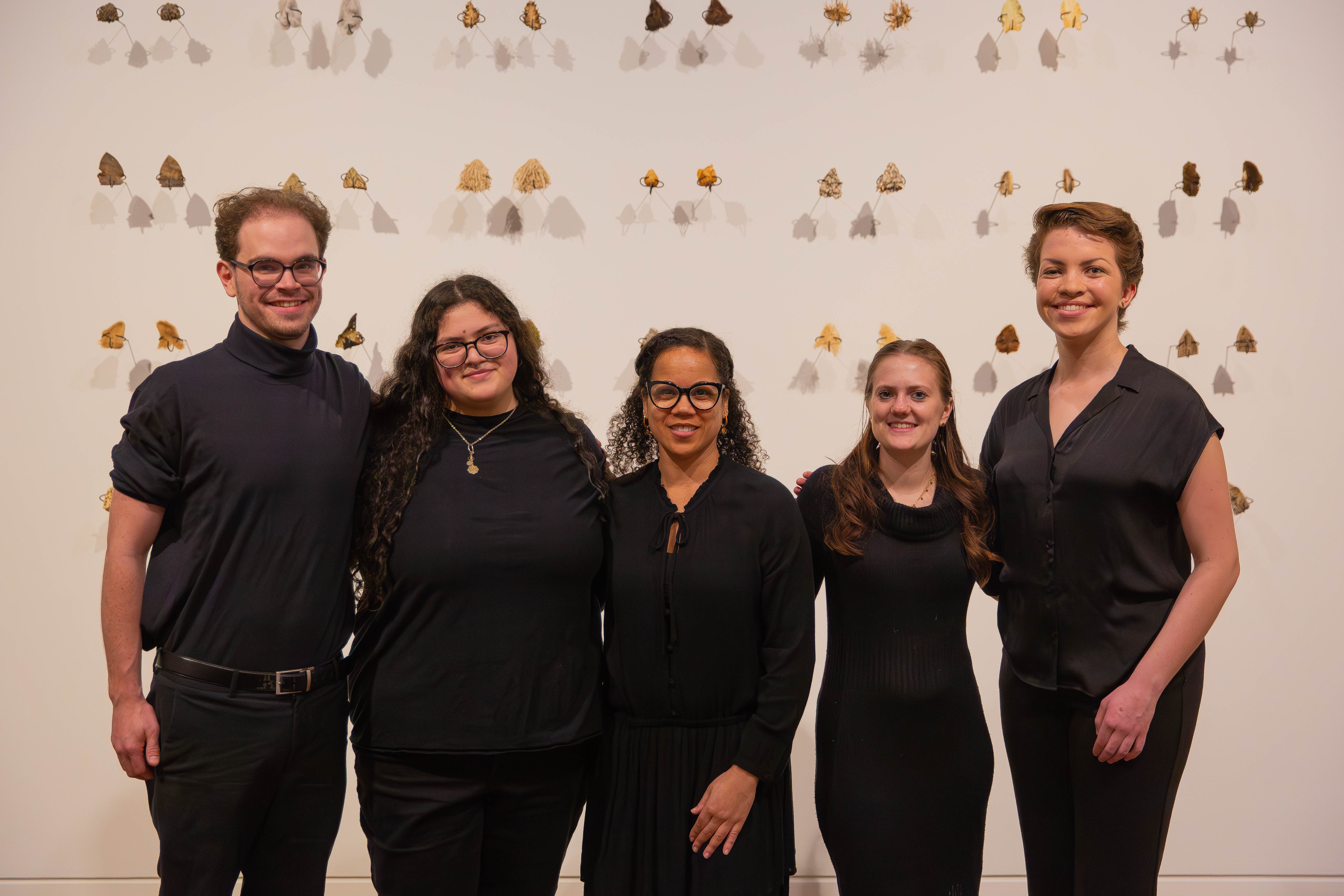
(DePaul University/Keeton Holder)
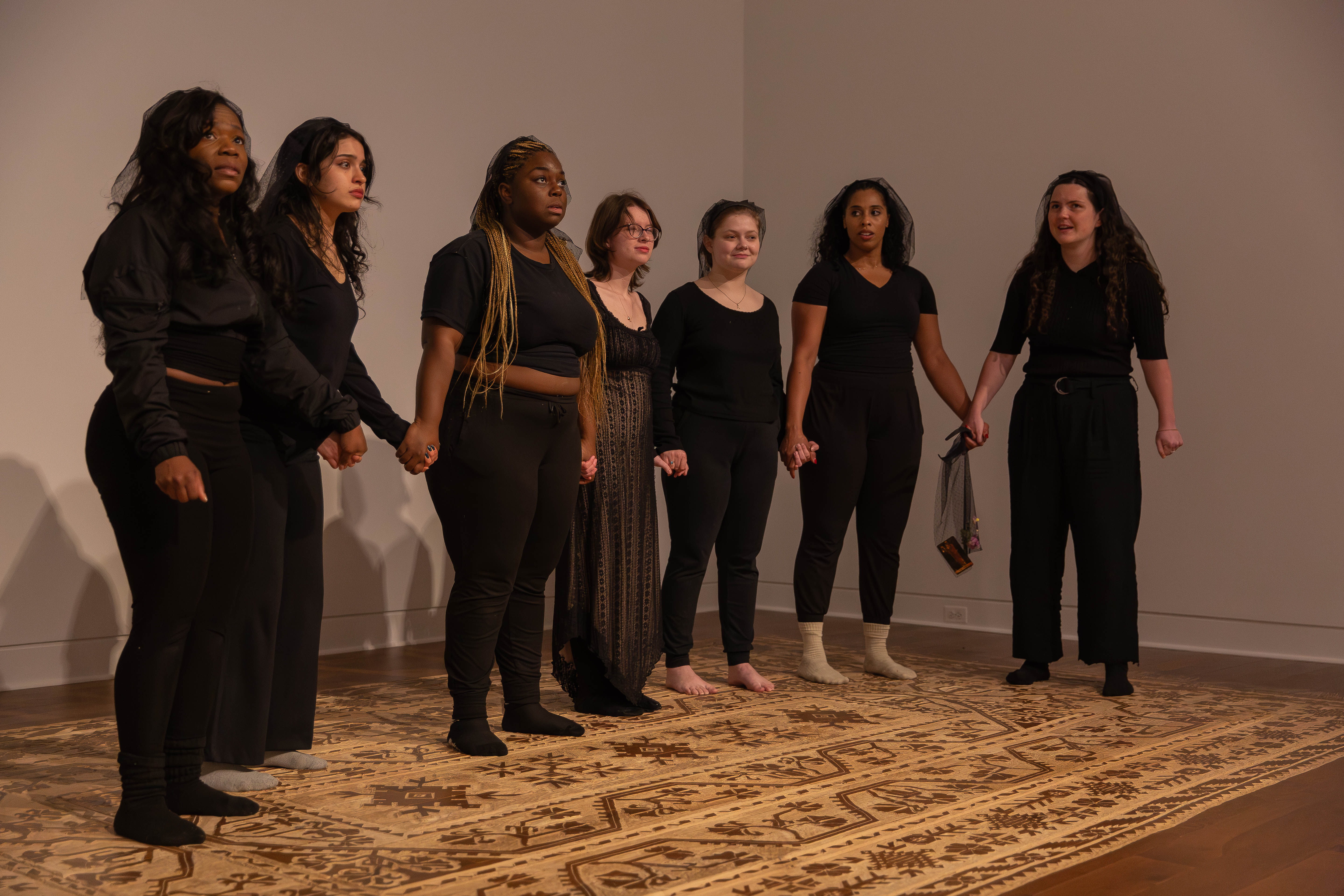
(DePaul University/Keeton Holder)

(DePaul University/Keeton Holder)
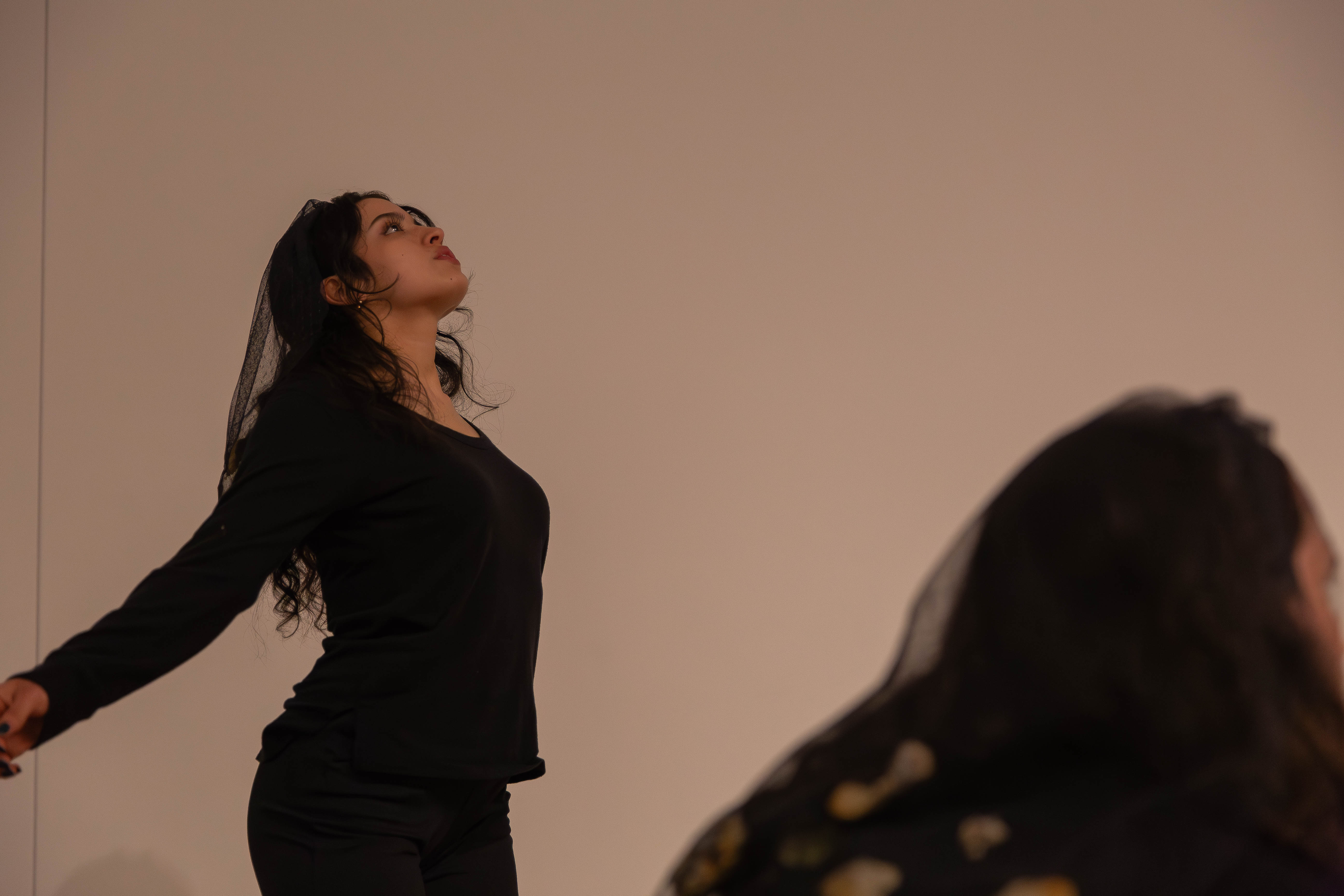
(DePaul University/Keeton Holder)
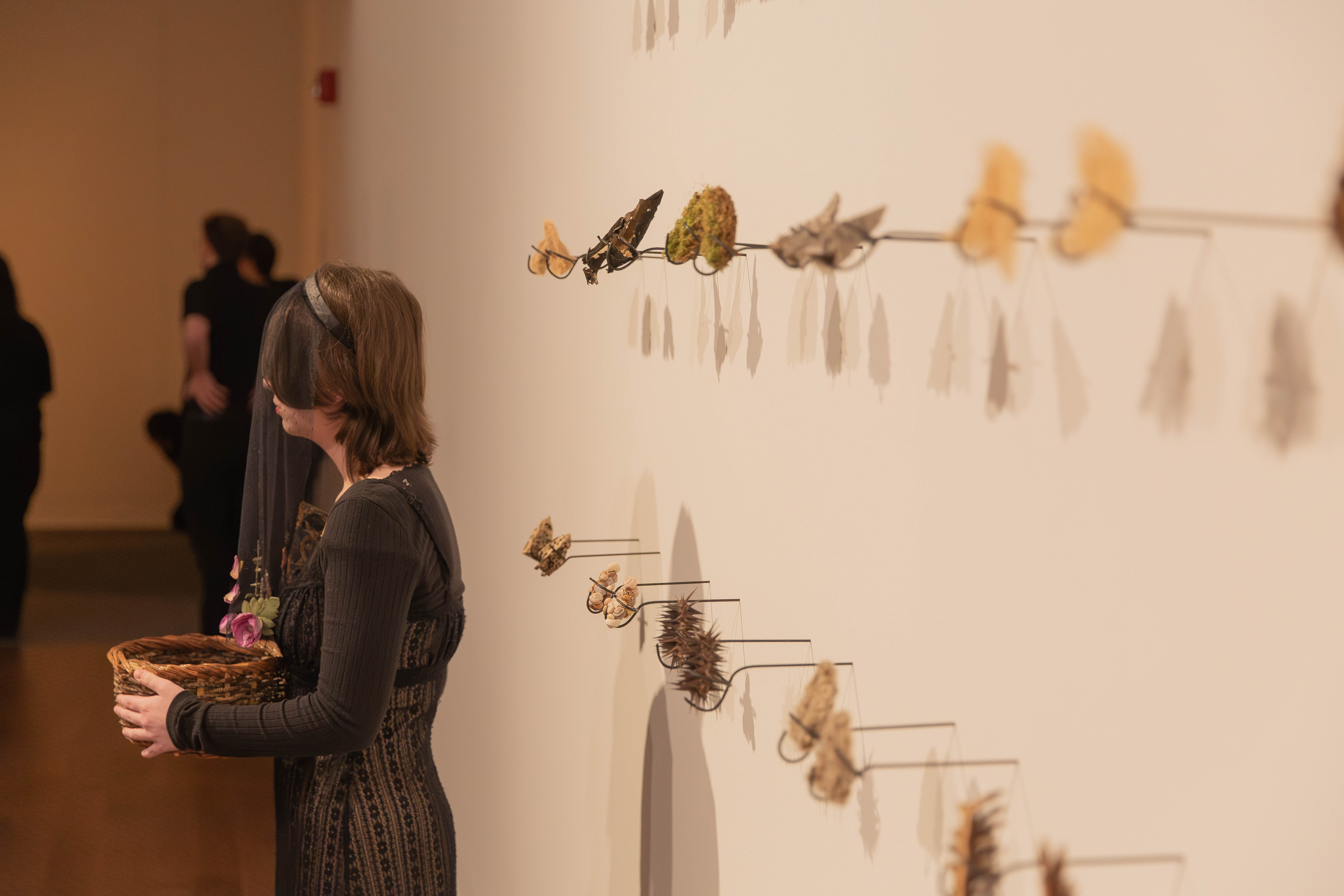
(DePaul University/Keeton Holder)
A new collaborative performance series from DePaul Art Museum, The Theatre School and School of Music began its run this past Friday and continues through Sunday, May 19.
The interdisciplinary performance, “Memo,” was created in response to DePaul Art Museum's current exhibition, “
Selva Aparicio: In Memory Of.” Combining visual, auditory and physical mediums, “
Memo” offers new ways for attendees to digest the themes of Aparicio’s exhibition — which explores themes of domestic violence, memory and death.
“We think about people absorbing content through various modes and learning via numerous techniques,” says Laura-Caroline de Lara, director of
DePaul Art Museum. “Often, something can resonate differently with audiences when you are able to combine the visual, the physical and the auditory together.”
A series of student-developed and performed theatrical vignettes, accompanied by student-composed music, guides attendees through the exhibit.
“Audiences can expect to share an intimate space and learn to view the pieces in the gallery in a new light,” says Liam Marchant, a School of Music graduate student who created the auditory portion of the project. “Seeing and listening to how we have responded to Aparicio's work may ignite other perspectives for the audience.”
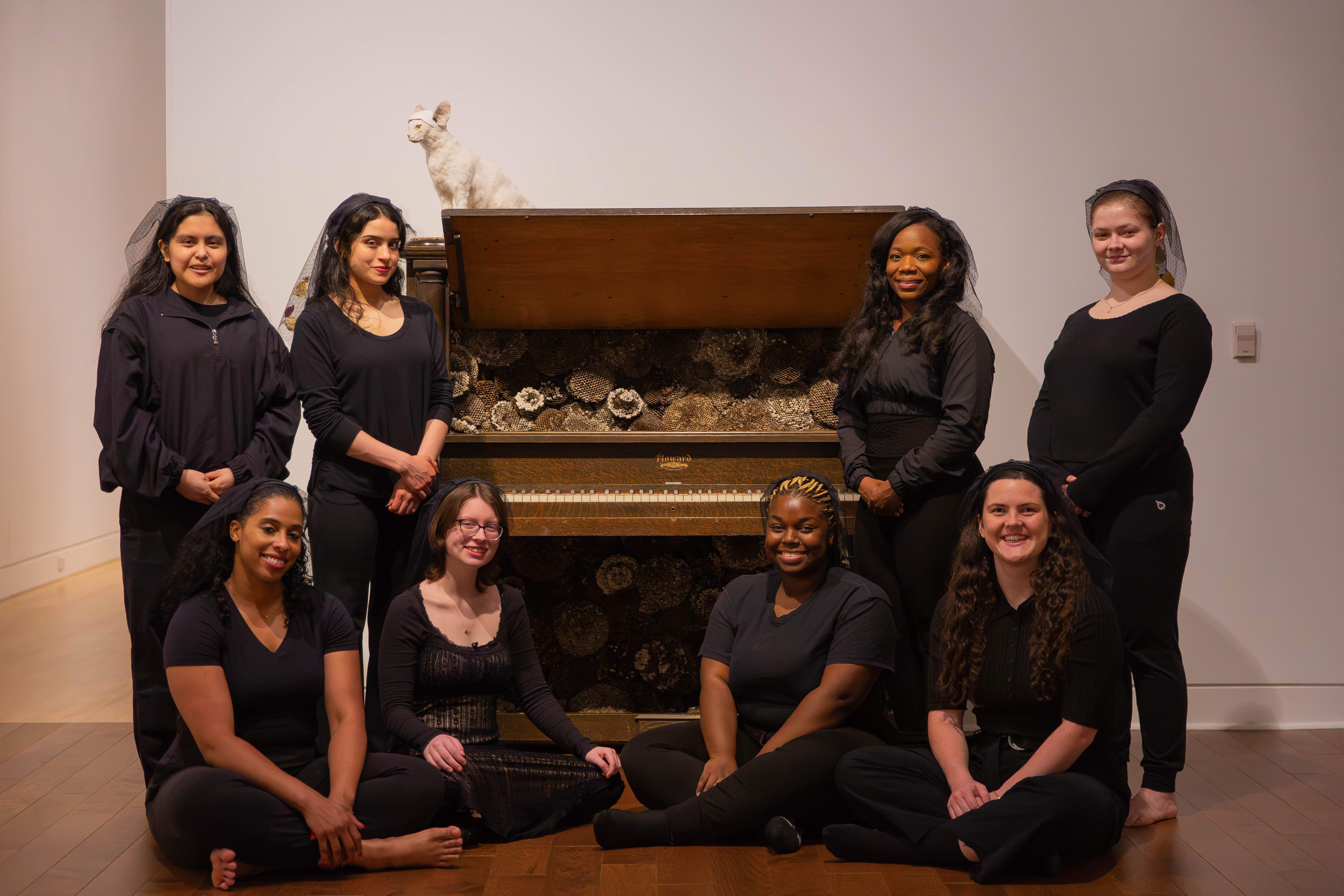 Theatre School students in front of Selva Aparicio's "Time's Refrain." (DePaul University/Keeton Holder)Addressing heavy topics through art
Theatre School students in front of Selva Aparicio's "Time's Refrain." (DePaul University/Keeton Holder)Addressing heavy topics through art
Artistic collaboration brings new opportunities for understanding and impact, especially surrounding heavy topics like death and domestic violence. Much of the work completed by DePaul’s theatre and music students included journaling and reflecting on pieces of Aparicio’s work to create a meaningful personal response.
“I knew early on that navigating a response to it would require emotional vulnerability and a raw compositional reaction to the work,” Marchant says. “At the center of these fixed pieces of visual art lies the very real experience of mourning. This work has enabled me to reflect on grief in my own life and put it directly into my response.”
One of Aparicio’s pieces, “Time’s Refrain,” is a piano filled with dozens of reclaimed wasp nests. Marchant, who grew up with a piano in his home, was inspired by the piece and chose to include the instrument in his composition.
Marchant collaborated extensively with The Theatre School
during his undergraduate studies and was eager to participate in another interdisciplinary production. He also worked with The Theatre School faculty member
Toranika Washington, who directed the student-developed theatrical vignettes using Laban movement analysis — a method and language for describing, visualizing, interpreting and documenting human movement.
Washington has experience with producing site-specific movement projects, specifically responding to artists’ museum exhibits. Using a range of exercises, she guided students through choreographing responses to Aparicio’s work.
“The process includes Laban, color psychology and dance composition movement explorations, as well as discussions around Selva’s ideas of memory, death, intimacy, mourning and collecting and reusing found items,” Washington says.
Students were not required to share their personal experiences. Instead, they used the language of Laban movement analysis to explore the subject matter in different ways. Every rehearsal included grounding exercises, breathwork and words of encouragement in addition to the physical, mental and spiritual work of creating each vignette.
“The ‘Memo’ ensemble is a wonderful group of soulful humans who are discovering new ways to connect to themselves, each other and to the world,” Washington says. “I'm excited for spectators to experience the fullness of this interactive collaborative performance.”
Jade Walker is a student assistant of media relations and communications in University Communications.